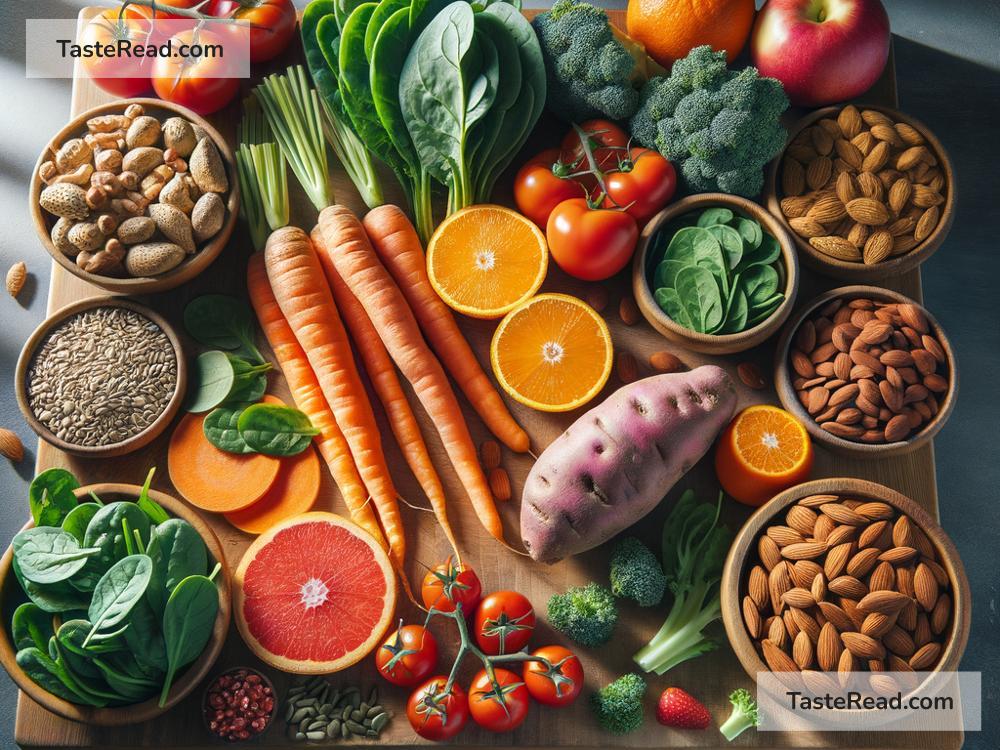Nourishing Your Skin: Foods that Support Healthy Skin Pigmentation
We all want radiant, healthy skin, but many of us overlook the impact that our diet has on our skin’s appearance. Your skin is your largest organ, and it reflects what’s going on inside your body. If you’re aiming for a natural and healthy glow, certain foods can help enhance your skin pigmentation and overall complexion. What you eat plays a huge role in maintaining balanced skin tone, protecting the skin from damage, and supporting the production of melanin—the pigment responsible for skin, hair, and eye color. Let’s explore some simple and delicious foods that promote healthy skin pigmentation in straightforward terms.
1. Carrots, Sweet Potatoes, and Other Orange Fruits and Vegetables
Orange-colored foods like carrots, sweet potatoes, and pumpkins are rich in beta-carotene, a type of carotenoid. Beta-carotene not only gives these foods their orange hue but also converts into Vitamin A in your body, which is crucial for healthy skin. Vitamin A helps regulate melanin production and keeps your skin smooth and hydrated.
Eating these foods regularly may give your skin a slight golden undertone, which adds to the appearance of glowing and healthy skin. Don’t worry—you won’t turn orange! Moderation is key.
2. Spinach, Kale, and Other Leafy Greens
Leafy greens like spinach and kale are great for skin health thanks to their high levels of vitamins and minerals. They are loaded with Vitamin E, Vitamin C, and iron, all of which support skin pigmentation. Iron is especially important for maintaining even pigmentation—it helps your blood carry oxygen to your skin, promoting its vibrance.
In addition, leafy greens contain antioxidants that protect your skin from harmful effects of the sun and free radicals, which can lead to uneven skin tone or age spots. Whether in salads, smoothies, or sautés, leafy greens are a skin-loving addition to any meal.
3. Tomatoes
Tomatoes are rich in lycopene, another carotenoid that benefits your skin. Lycopene gives tomatoes their red color and serves as a natural sunscreen from within. While it’s not a replacement for topical sunscreen, eating tomatoes frequently can help protect your skin from UV rays, which can cause pigmentation issues like dark spots.
Additionally, lycopene improves blood circulation, giving your skin a healthy glow. Cooking tomatoes—like in soups or pasta sauces—enhances the absorption of lycopene, so you can enjoy even more benefits.
4. Nuts and Seeds
Nuts and seeds, such as almonds, walnuts, sunflowers seeds, and flaxseeds, are filled with skin-friendly nutrients like Vitamin E, zinc, and healthy fats. Vitamin E is especially important because it protects your skin cells from damage and helps repair uneven pigmentation caused by sun exposure or aging.
Zinc, on the other hand, promotes healing and skin cell renewal, keeping your complexion fresh. The essential fatty acids found in these foods also play a key role—they maintain skin elasticity and keep it moisturized from within. Enjoy a handful of nuts and seeds as a snack or sprinkle them on your salads for glowing skin.
5. Citrus Fruits and Berries
Vitamin C is crucial for maintaining an even skin tone, and foods like oranges, lemons, strawberries, and blueberries are excellent sources of this nutrient. Vitamin C supports the production of collagen, which keeps your skin firm and smooth, and it also reduces oxidative stress that can lead to pigmentation problems.
Together with Vitamin E and other antioxidants, Vitamin C works to brighten your skin, fade dark spots, and protect your skin from environmental toxins. A fruity breakfast or midday snack can be a simple and sweet way to boost your skin health.
6. Fish Rich in Omega-3 Fatty Acids
Fatty fish like salmon, mackerel, and sardines are packed with Omega-3 fatty acids, which are essential for maintaining healthy skin. Omega-3s combat inflammation in the skin, which can cause redness, blotchiness, or darker pigmentation in some areas.
They also help your skin retain moisture, improving texture and contributing to a glowing complexion. If you’re not a fan of fish, consider plant-based sources of Omega-3s like chia seeds, walnuts, or flaxseeds.
7. Dark Chocolate (Yes, It’s Good for You!)
Good news for chocolate lovers—dark chocolate can actually benefit your skin pigmentation! It’s rich in flavonoids, which are antioxidants that protect your skin from sun damage and increase blood flow to your skin. This can improve your skin’s hydration and tone over time.
Stick to dark chocolate with at least 70% cocoa for maximum benefits and enjoy it in moderation. A square or two can be a guilt-free treat that supports your skin from the inside out.
8. Water
While it’s not technically a food, water deserves a spot on this list. Staying hydrated is one of the easiest and most effective ways to improve your skin health. Drinking enough water keeps your skin plump, flushes out toxins, and prevents dryness or dullness, ensuring you maintain healthy pigmentation.
Pairing a good diet with plenty of water is the ultimate recipe for glowing skin.
Final Thoughts
Your diet plays a major role in determining how healthy your skin looks and feels. By adding skin-nourishing foods like carrots, spinach, tomatoes, nuts, citrus fruits, fish, and even dark chocolate to your meals, you can support healthy pigmentation and glowing skin. Remember that consistency is key—eating these foods regularly will provide the best results over time.
Combine a healthy diet with good skincare habits, adequate sleep, and sun protection, and your skin will thank you for it. After all, beauty really does start from within!


